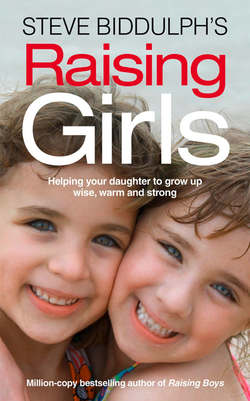Читать книгу Steve Biddulph’s Raising Girls - Steve Biddulph, Steve Biddulph - Страница 14
Chapter 1 Creating a Total Girl
ОглавлениеTwo-year-old Mollie lifts a Tonka truck high in the air and is about to smack it down on her friend Jemima’s head. Even at two, she knows this is not really in the True Spirit of Playgroup, so she glances towards where her mother is watching to see how it might go down. Her mum has seen it all and is urgently flashing her a ‘don’t you dare’ frown. Ever … so … slowly, Mollie lowers the truck to the carpet and goes back to crayoning. Jemima remains blissfully unaware that anything has happened and goes on humming to herself while holding firmly onto the only yellow crayon.
Ten-year-old Elise looks at her computer screen, and sees the message bagging one of the girls in her class, a girl who is already shy and insecure. It’s mean and personal, and one of her own friends just posted it. Elise chews her top lip so hard it leaves a red mark. She hates bullying, but how can she intervene and not make enemies? She heads downstairs to talk to her mum.
Fifteen-year-old Samantha pauses during the maths exam, draws a deep breath and frowns. She has almost finished, with loads of time to spare. If she keeps going, she will probably top the class; she likes maths and always does well, but then she will be seen as a ‘brain’, which is highly uncool, especially with boys. She knows she can just stop now and leave out the last couple of questions. Nah! she exclaims to herself, then worries if she said that out loud? Nobody seems to have noticed. She gets on and finishes the exam.
Girlhood is a lot of fun, for parents and for girls themselves, but it also has its intense times. At each stage of their growing up girls have to deal with difficult decisions. They get confused and make mistakes, but eventually they learn and grow, and out of all this they become capable and strong adult women.
For you as their parent, it helps to have a map of the country of childhood, so that you know what to expect and what to do. The map in this book is drawn from the latest findings in child development and neuroscience, family therapy and parenting education, but it also comes from talking to mothers, fathers and teachers in many countries. I never quite trust experts, unless what they say matches my own heart and passes the test of common sense. That comes from talking to lots of people. Eventually, the map becomes clearer. You feel like you know where you are.
